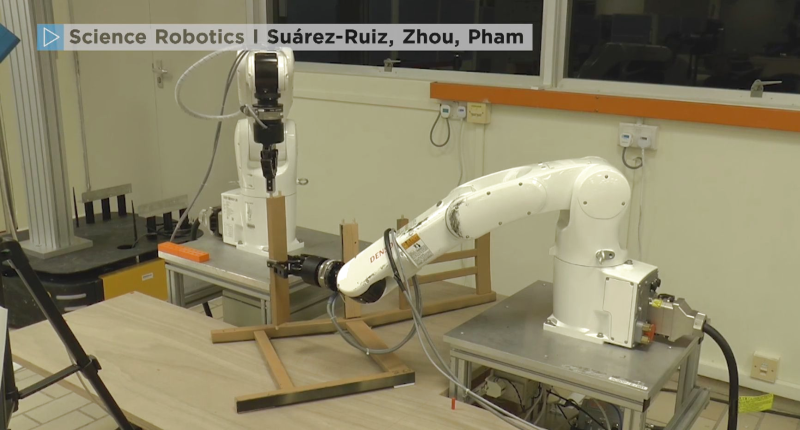Hackaday pages are rife with examples of robots being built with furniture parts. In this example, the tables are turned and robots are the masters of IKEA pieces. We are not silly enough to assume that these robots unfolded the instructions, looked at one another, scratched their CPUs, and began assembling. Of course, the procedure was preordained by the programmers, but the way they mate the pegs into the ends of the cross-members is a very human thing to do. It reminds us of finding a phone charging socket in the dark. This kind of behavior is due to force feedback which tell the robots when a piece is properly seated which means that they can use vision to fit the components together without sub-millimeter precision.
All the hardware used to make the IKEA assembler is publicly available, and while it may be out of the typical hacker price range, this is a sign of the times as robots become part of the household. Currently, the household robots are washing machines, smart speakers, and 3D printers. Ten years ago those weren’t Internet connected machines so it should be no surprise if robotic arms join the club of household robots soon. Your next robotics project could be the tipping point that brings a new class of robots to the home.
Back to our usual hijinks, here is a robot arm from IKEA parts and a projector built into a similar lamp. or a 3D printer enclosed in an IKEA cabinet for a classy home robot.
Thank you, [Itay] for another great tip.
















the link in the article was to a news item on another web site, and the link to that was an article behind a login.. ie this is a useless article for HD readers….
I only tried to follow the links to get a link to how much the robot arms were! And failed..
The question here is.. will the robots also have “bits left” after assembling?
I’m more interested in how they’d cope with missing bits
The robots won’t “know” if there are extra bits, they will use what is called for and ignore the rest.
But that does bring to mind the number of times I’ve found screws or nuts without threads while assembling “knock down” furniture.
After just assembling a 4×4 shelving unit and needing the help of two others to align the 6 dowels, I suspect that they will need more robots with computer vision in this future scenario…
10/10 Title
These robots look like the turret assembly robots @ aperture science, and the robots that rebuild Atlas and P-body.
Hopefully the robots won’t overscrew the fasteners into MDF, stripping the holes, like so many humans do!
I always use my drill on the lower clutch setting to prevent this, the times i stripped holes i can count on one hand (or maybe 2). But look closer and it seems to only dowel the chair in position and not a single screw is being placed or am i missing something?
A company I once worked for ordered a desk; that desk, and it’s two replacements, were unusable because the “assemblers” had stripped most of the screw holes!
I begged them to send me the 3rd desk un-assembled, so I could do the assembly myself, they didn’t.
For some reason, that office furniture company folded a few months later…
“We are not silly enough to assume that these robots unfolded the instructions, looked at one another, scratched their CPUs, and began assembling.”
Be so much more fun though.
They’ve already past human intelligence!
Didn’t we have an HaD article about furniture assembling bots before? Or did I see it on HIGNFY?
Maybe we need origami furniture? No assembly required.
yes. they passed human intelligence